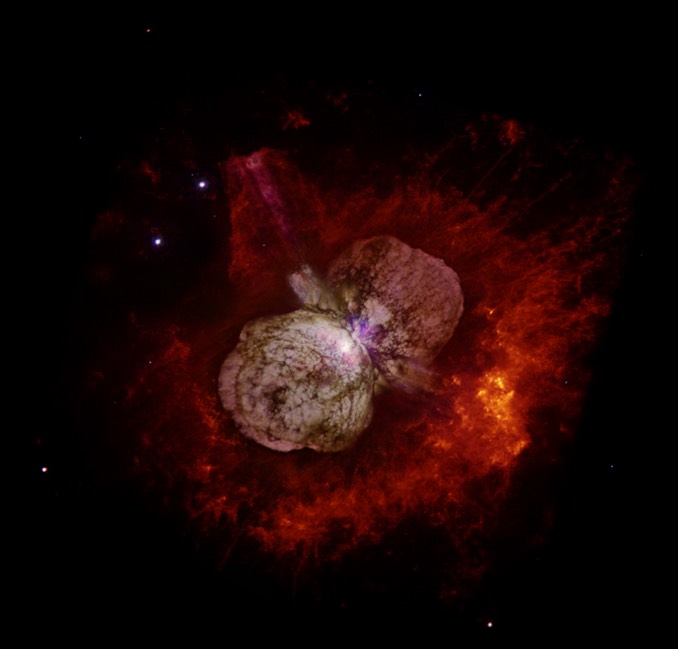
Data from NASA’s NuSTAR X-ray telescope indicates Eta Carinae, the brightest, most massive star system within 10,000 light years of Earth, is generating high-energy cosmic rays by accelerating electrically charged particles to nearly the speed of light that then crash into and energize starlight.
Cosmic rays with energies greater than one billion electron volts routinely enter the solar system from interstellar space, but the trajectories of such high-speed electrons, protons and atomic nuclei are scrambled by their passage through magnetic fields. But at least some of those cosmic rays apparently originate in the Eta Carinae system.
Located some 7,500 light years from Earth, Eta Carinae is made of two stars containing 90 and 30 times the mass of the Sun that pass within 225 million kilometres (140 million miles) of each other every five-and-a-half years. The star system famously brightened in 1843, briefly becoming the second brightest “star” in the sky.
“Both of Eta Carinae’s stars drive powerful outflows called stellar winds,” said Michael Corcoran, a researcher at NASA’s Goddard Space Flight Center. “Where these winds clash changes during the orbital cycle, which produces a periodic signal in low-energy X-rays we’ve been tracking for more than two decades.”

The Fermi Gamma-ray Space Telescope observes a similar change in higher-energy gamma radiation in the general direction of Eta Carinae, but the instrument does not have the resolution to confirm the source. Kenji Hamaguchi, an astrophysicist at Goddard and the lead author of a new study, says a review of NuSTAR data and archived observations by the European Space Agency’s XMM=Newton space telescope indicates Eta Carina is a likely source.
Low-energy, or soft, X-rays originate in gas at the interface of colliding stellar winds where temperatures can exceed 40 million degrees Celsius (79 million degrees Fahrenheit). But NuSTAR detected a source of radiation exceeding 30,000 electron volts, about three times higher than interacting shock waves can explain.
The “hard” X-rays show a similar pattern as the radiation variations seen in gamma rays by Fermi and at least some of the energetic photos likely reach Earth as cosmic rays.
“We’ve known for some time that the region around Eta Carinae is the source of energetic emission in high-energy X-rays and gamma rays,” said Fiona Harrison, the principal investigator of NuSTAR and a professor of astronomy at the California Institute of Technology. “But until NuSTAR was able to pinpoint the radiation, show it comes from the binary and study its properties in detail, the origin was mysterious.”



